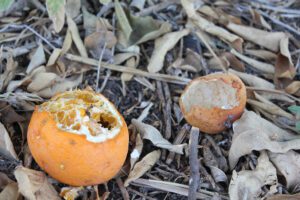
Western Plant Health (WPH) recently submitted comments on the U.S. EPA’s “Draft Biological Evaluation, Effects Determinations, and Mitigation Strategy for Federally Listed and Proposed Endangered and Threatened Species and Designated and Proposed Critical Habitats” concerning rodenticide use. This far-reaching federal proposal could have tremendous impacts on the Western U.S.
But the threat to public health and safety is not only at risk at the federal level. In California, legislation (AB 2552, by Assemblymember Laura Friedman) would ban the use of first- and second-generation rodenticides in wildlife areas, which would be redefined as any “open space” and require a 5,000-foot buffer around that area. In addition, it would allow any individual to file a private right of action against any applicator of a rodenticide on behalf of individual animals, wildlife or wildlife species at risk of being “harassed.”
“Harassment” includes injury to an animal by annoying it to such an extent as to disrupt normal behavioral patterns, including but not limited to breeding, feeding or sheltering. This bill would substantially eliminate the ability to utilize rodenticides to protect the public and food supplies from diseases spread by rodents.
WPH supports minimizing the risks to non-target species when utilizing rodenticides through risk-mitigation measures. Rodent control specialists are regularly trained to survey and monitor rodent patterns correctly to target harmful rodents, and safely and efficiently utilize bait stations that control rodents while protecting non-target species. However, we oppose any proposed measures that compromise the effectiveness of the tools that can effectively control rodent populations. Uncontrolled rodent populations can cause death and substantial health and economic hardship to growers, warehouses and communities.
There is no argument that rodenticides are crucial tools for controlling rodent populations. These populations carry a range of diseases that pose significant health risks to humans and cause considerable damage to infrastructure, agriculture and the environment.
Health Risks of Rodents
The U.S. National Park Service notes rodents are carriers of fatal diseases and directly transmit several viruses, including hantavirus, leptospirosis, listeria, rat bite fever, rat lung disease and salmonellosis. These pathogens can infect humans through various routes, including direct handling, bites or contact (through breathing in air or eating food) with feces, urine or saliva. They also serve as the hosts for ectoparasite vectors (such as ticks or fleas) that transmit other diseases, including Lyme disease, bubonic plague, tularemia, murine typhus and tickborne relapsing fever.
These diseases have critical health implications, from respiratory issues and asthma, especially in children, to food contamination on farms, in homes and restaurants.
The Associated Press reported in 2017 the case of Ben Manilla and Eliza Lape, a newlywed couple from the Bay Area who contracted rat lungworm disease while honeymooning in Hawaii. Rat lungworm disease, a brain-infecting condition, led to severe medical complications for the couple following their stay in the Hana area of Maui. Ben Manilla, a lecturer at UC Berkeley Graduate School of Journalism, faced a dire health ordeal, including a month-long intensive care unit stay, numerous operations, two instances of pneumonia, a blood clot and ongoing kidney issues.

Students and teachers at Villa Park Elementary School “were covered in itchy, red bites after rats invaded an elementary school in Southern California.” CBS Los Angeles reported “rats were found underneath some portable classrooms. Health officials said the bumps that were reported by the students and faculty were caused by tiny bugs that live on rats.” After the news broke, vector control workers were sent to eradicate the rodents.
In the agricultural sector, roof rats can run rampant in California orchards, according to UC ANR scientists. “In pistachio and other nut orchards, roof rats are burrowing and nesting in the ground where they’re chewing on irrigation lines, causing extensive damage,” said Rachael Long, UCCE farm advisor. “And it’s not just the fruit damage. They nest in citrus trees, feeding on the fruit and terrifying field workers when they jump out as people are picking the fruit. The chewing pests are also girdling tree limbs, causing branch dieback.”
These experiences are a stark reminder of the potential for severe health outcomes from diseases that are often overlooked or underestimated.
Economic Impact of Rodent Infestations
The economic implications of rodent infestations and the need for rodenticides are significant. With up to $504 million in annual losses to California agriculture due to rodent damage, the ability to use rodenticides is crucial for protecting crops and orchards. The potential loss of this tool could exacerbate economic and health issues associated with rodent infestations.
In 2009, CDFA, in partnership with the National Wildlife Research Center, conducted a study on the annual effects of rodents on 22 agricultural commodities across 10 counties throughout the state. The study found in Monterey County, crop damage caused by rodent infestation was responsible for between $44 million and $128 million in annual revenue loss and 515 to 1,514 jobs.

Effectiveness of Rodenticides
Maintaining the use of rodenticides is supported by their proven effectiveness. California’s Integrated Pest Management Programs, which include rodenticides, are essential for preventing and eradicating pests. California’s stringent regulations on rodenticide applications and decades of scientific and health-related studies show rodenticides protect public health and the environment, highlighting the necessity of these tools for pest control.
In Los Angeles, we witnessed the reappearance of what Governor Newsom described as a medieval disease: typhus. In 2022, the last year of full reporting, there were 171 cases of typhus just in Los Angeles County alone. This medieval sickness is spread through fleas infected by rodents that carry the disease to new human hosts. To control the spread from rodents to people or to family pets that then spread to people, the City of Los Angeles and other cities used rodenticides to protect our most at-risk populations.
Recently, the California EPA building management was battling a rat infestation. The building management tried “going green” for several weeks to solve the infestation. An activist group, Owls for Peace, wanted the building management to send in cats and owls, but not the “vicious mongoose” because “they are unreliable.”
After five weeks of going green, the Sacramento Bee reported the rats keep winning. “In an email to staff late in the afternoon on June 13, CalEPA officials announced that in the coming days they would be setting out a type of second-generation anti-coagulant poison to kill the rats that had overrun the I Street building’s exterior courtyard, which shares a playground with a daycare center used by the children of state government workers.”
In Malibu High School, administrators spent weeks dealing with their rat infestation.
The Santa Monica-Malibu Unified School District also took a “green approach” to the infestation by “trimming trees to minimize access in the buildings; working with staff to ensure food is not left out and trash cans remain closed; asking everyone on campus to keep doors closed to campus buildings; installing snap traps throughout the campus; sending Best Management Practices cleaning teams to clean affected areas; and have the director of maintenance and operations, manager of operations and Integrated Pest Management (IPM) tech walk around the campus with the principal, Dr. Michelle Nye, to address the issues.” But similar to the CalEPA building efforts, the rats were winning.
Malibu school officials said, “The problem is so bad that rodents have been gnawing through some garbage bins… It’s so severe that Superintendent Dr. Ben Drati has resorted to the authorization of using poison that rankled some of those in attendance.”
Rodenticides, developed through rigorous scientific research and regulatory scrutiny, have consistently proven to be one of the most effective tools for controlling rodent populations. These products are designed with a deep understanding of rodent behavior and biology, ensuring targeted and efficient management of infestations. Moreover, the industry is committed to continuous improvement and innovation, developing formulations that minimize environmental impact and non-target exposure while maintaining efficacy.
Public Perception and Education
WPH supports a balanced approach that protects public health and educates the public about the importance of rodent control and the responsible use of rodenticides.
Rodents are not merely a nuisance; they are carriers of diseases and can significantly impact public health, agricultural yield and property. WPH members employ stringent safety measures and adhere to California’s strict regulatory guidelines to ensure our products are used effectively and with minimal environmental impact.
Public perception and awareness are crucial in understanding the balance between pest control and environmental stewardship. By fostering informed conversations, we aim to demystify the role of rodenticides in public health and safety, emphasizing our dedication to responsible pest management and environmental care.
California’s Regulatory Framework
While exploring alternatives and mitigation measures is meaningful, the California legislature must consider the limitations and effectiveness of these alternatives compared to rodenticides. The regulatory framework in California ensures that rodenticides are used responsibly, emphasizing the need for certified professionals in their application.
The consequences of eliminating the use of rodenticides in California are concerning. With rodents’ rapid breeding rates, ineffective control measures could lead to unmanageable infestations, posing significant risks to public health, agriculture and the environment.
As leaders in this field, WPH members are dedicated to advancing safe, effective and sustainable pest management solutions that address immediate rodent infestation concerns and long-term environmental health.
References
AB 2552: https://leginfo.legislature.ca.gov/faces/billNavClient.xhtml?bill_id=202320240AB2552
National Park Service notes: https://www.nps.gov/articles/000/rodent-borne-diseases.htm
Bay Area Couple: https://www.cbsnews.com/sanfrancisco/news/hawaii-honeymoon-rat-lungworm-disease-bay-area-couple/
CBS News Rash spreads: https://www.cbsnews.com/news/rash-spreads-among-students-teachers-after-rats-invade-calif-elementary-school/
CA Department of Food and Ag Study: https://www.victorpest.com/articles/economic-effects-of-rodent-infestation
Los Angeles Typhus: https://www.usatoday.com/story/news/nation/2019/02/07/typhus-outbreak-los-angeles-flea-borne-disease-city-hall/2799275002/
Sacramento Bee: https://www.sacbee.com/news/environment/article233592047.html
Malibu High Took a Green Approach: https://malibutimes.com/article_7fbdc65a-b9b3-11e7-aae4-8f06d69b0dfe
Malibu School Officials Said: https://malibutimes.com/article_bd4f784c-bf2b-11e7-bd12-2ba0cade78aa











